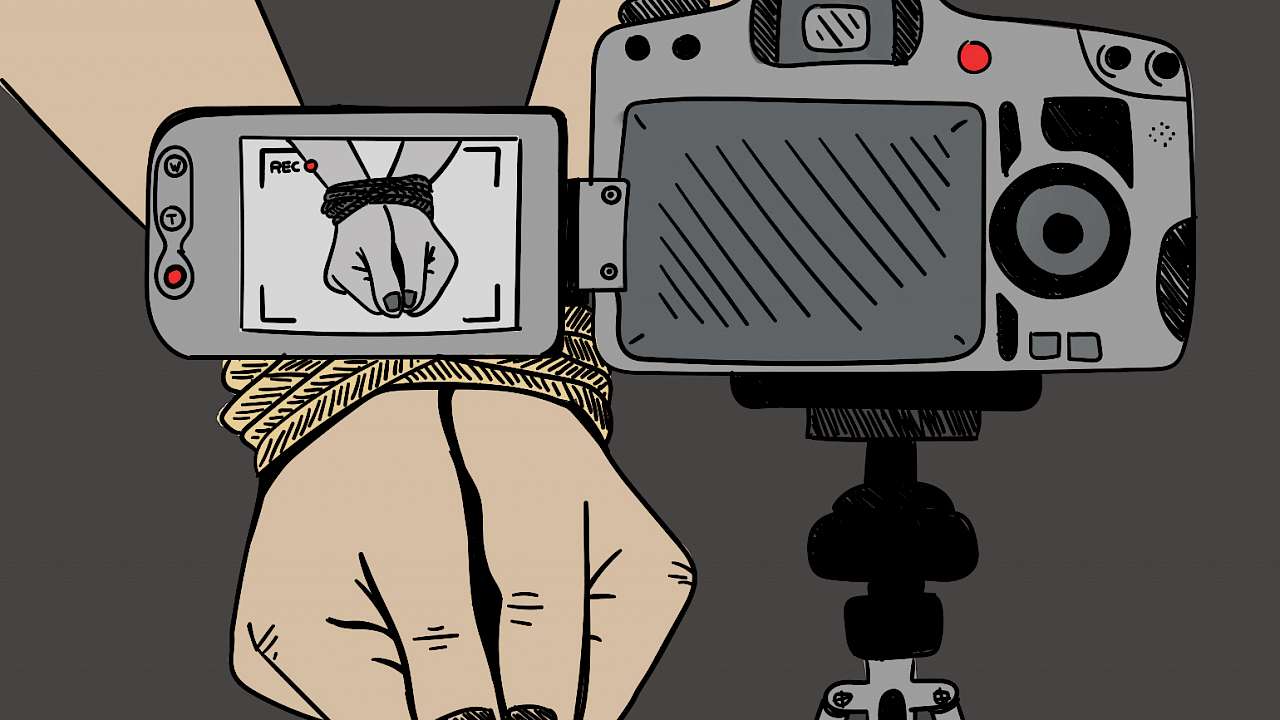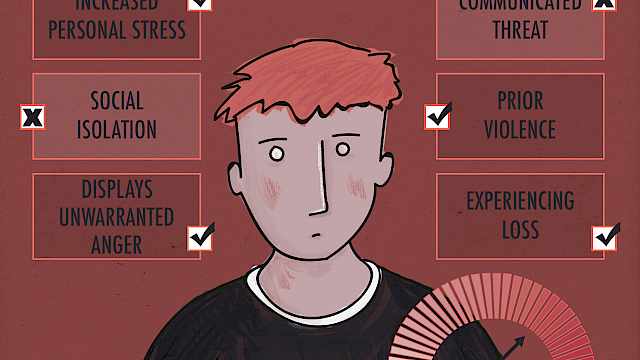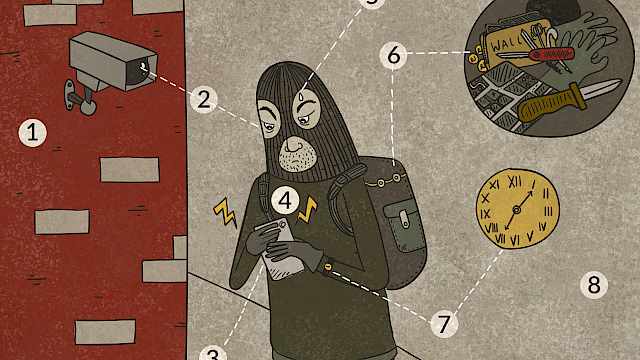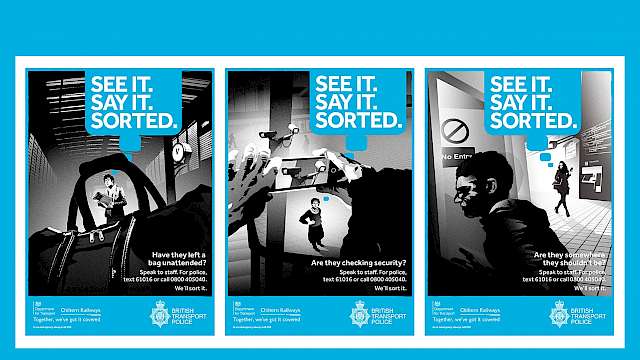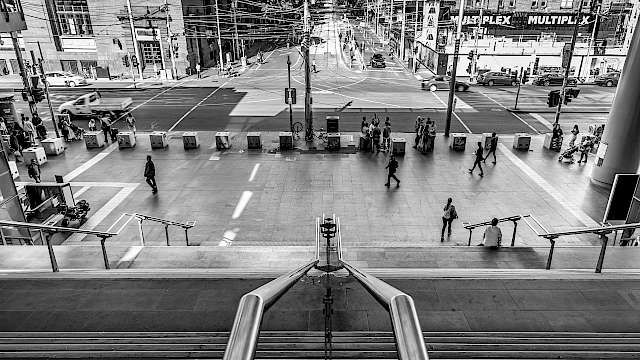While terrorist hostage-taking is uncommon, ideologically motivated hostage-takers often provide a video demonstrating proof of control and proof of life (POL). These videos establish that a hostage is alive at the time the video was made, and hence provide valuable information for families and governments charged with their safe recovery.
What they don’t reveal, however, is the likely fate of hostages.
Theories have been suggested that hostage-taking is a form of organised crime where economic concessions are demanded from rational actors requiring a benefit. While this may apply in many cases, this article argues that each case and hostage-taking group differs, and variables apply dependent on the political situation, the group dynamic and evolving methodology, and the political ‘win’ current to the prevailing conditions (e.g. civil war breakout).
There is limited research on POL videos and narrative exploration, which can inform thinking as to whether hostage-takers are more inclined – through their behaviours and narrative – to execute hostages, or whether they are holding hostages to obtain political concessions to pursue, fund, and finance their strategic attacks and initiatives.
Addressing limited research in this area can help support our understanding of the terrorist group dynamic, their strategic thinking, and the business model they are employing.
Insights gained from analysing POL videos have the potential to improve operational planning and save lives
Furthermore, any hostage rescue operation can significantly raise the risk to life of a kidnapped hostage held by a terrorist group, so insights gained from analysing POL videos have the potential to improve operational planning and save lives.
Three types of hostage-taking
Hijacking – Hostages are held under duress but the main goal of the terrorists is something other than killing the hostages, e.g. the al-Qaeda-inspired 9/1 attacks, where planes were hijacked and flown into iconic buildings.
Barricade-siege – Terrorists invade a building to kill or hold people hostage. This type of incident inevitably provokes a quicker response from the authorities and results in a stand-off, e.g. the Bataclan theatre siege where Islamic State of Iraq and the Levant (ISIL) inspired terrorists murdered 90 people and injured many more.
Kidnapping – Different to the first two categories in that it is normally a predetermined activity involving the instigation of demands or concessions by the hostage-takers.
Killed or released?
To determine what insights POL videos might hold about the fate of hostages, I carried out a coding and content analysis of 51 POL videos involving 62 hostages (predominantly males aged from 23 to 70 years) kidnapped by international terrorist organisations. The cases were recorded from 2003 to 2017.
Table 1 (below) provides a summary of the initial capture. Table 2 (below) summarises the narrative analysis of the POL videos.
| Sex | Whom demands are directed at | Who speaks in the video | Hostage-takers shown |
|---|---|---|---|
| Male – 87% | Government – 92% | Hostage – 67% | 37% |
| Female – 13% | Family – 6% | Hostage-taker – 6% | (74% died) |
| Unknown – 2% | Both – 27% | ||
| Ransom demanded | Threats made | Deadline given | Weapon pointed |
| 24% | 29% | 20% | 27% |
| (100% died) |
Table 1. Descriptive statistics derived from the analysis of POL videos
| Religion mentioned | Religious symbols | Quran cited | Positioning |
|---|---|---|---|
| 41% | 51% | 14% | On a bed – 2% |
| Standing – 2% | |||
| Sitting – 2% | |||
| Kneeling – 2% | |||
| Ransom demanded | Threats made | Deadline given | Weapon pointed |
| 22% | 39% | 45% | 59% |
| (75% killed) |
Table 2. Video content
Hostages kidnapped in Afghanistan and Mali had no fatalities (however, it is noted that hostages are still being held at this time in Mali and, therefore, their fate is unknown). From the analysis of the sample, hostages taken in Iraq and Syria had the highest death rate in terms of this sample – 78% and 70% respectively.
Furthermore, regarding Afghanistan and Mali, these cases accounted for the longest periods held in captivity (five years and five-and-a-half years respectively). This suggests that the longer a hostage is held, the more likely they are of being released.
The longer a hostage is held, the more likely they are of being released
The POL videos varied in length from 12 seconds to almost 19 minutes. The longer videos tended to involve a much more advanced production, incorporating propaganda and news footage from a political dimension.
In terms of outcome, there was no difference whether the hostages were shown alone or together (in cases where multiple hostages were taken).
14% of the sample in the POL videos were shown as on their knees in a pleading state. Of note, all hostages in these videos were killed.
JNIM in Mali were noted to have significantly improved their POL productions in the last six years to a very professional output. It is unknown whether this is a strategic imperative or could be answered by access to better equipment and applications that are now available.
It was rare to see hostage-takers delivering a narrative alone and without the hostage in view. Only two cases from the sample fitted this category. They were both ISIS videos from Syria cases and depicted the same hostage-taker. Both cases ended in death.
39% of the sample analysed involved armed and masked hostage-takers being depicted in the videos. Of those, 75% ended in the death of the hostages.
If you would like to learn more about this research, please contact the author, Matthew Fields, by email at [email protected]
Copyright Information
As part of CREST’s commitment to open access research, this text is available under a Creative Commons BY-NC-SA 4.0 licence. Please refer to our Copyright page for full details.
IMAGE CREDITS: Copyright ©2024 R. Stevens / CREST (CC BY-SA 4.0)
